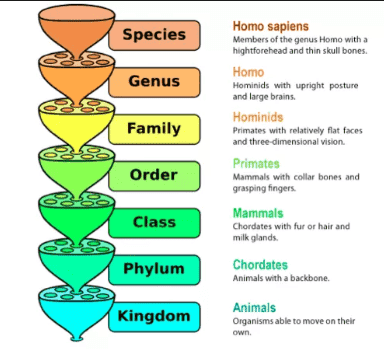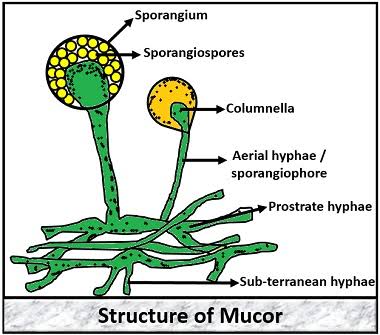A.CLASSIFICATION
The genus Riccia comprise about 138 species which are cosmopolitan and widely distributed both in tropical and temprate regions of Earth. With the exception of a single aquatic species, R.fluitans, all the other species are terrestrial.
About 28 species of riccia have been reported from different parts of India. Of these the common species are- R.discolor , R.crystalline and R.gangetica etc.
The ventral surface of the thallus bears numerous Multicellular hair or scales, and unicellular rhizoids of two types smooth wall rhizoids and tuberculate rhizoids. Rhizoids attach the thallus to the substratum and absorb water and solutes from the soil.
(b) Adventious branches- In R.fluitans special adventious branches arise from the ventral surface of the thallus in the midrib region. They become detached from parent thallus by the decay of the connective tissue and farm a new plant.
(b) Archegonium- Each archegonium also stands in a pit called Archegonia chamber. The archegonium is without stalk and is directly attached with the thallus tissue.
As a result of fertilization , a diploid zygote 2n is formed. With the formation of zygote , diploid sporophytic generation begins.
Divisions-Bryoohyta
Class-Hepaticopsida
Order-Marchantiales
Family-Ricciaceae
Genus-Riccia
The genus Riccia comprise about 138 species which are cosmopolitan and widely distributed both in tropical and temprate regions of Earth. With the exception of a single aquatic species, R.fluitans, all the other species are terrestrial.
About 28 species of riccia have been reported from different parts of India. Of these the common species are- R.discolor , R.crystalline and R.gangetica etc.
B.STRUCTURE OF THE GAMETOPHYTE
1.EXTERNAL STRUCTURE- The plant body of Riccia is flat, dorsiventral thallus , which is prostrate , ribbon like and more or less fleshy. The branching of thallus is dichotomous. Due to repeated dichotomy and also due to the occurrence of a number of such dichotomously branched plants together at a place, the plants often takes a rosstte form. The thllus is usually green in colour and each thallus is provided with a midrib in the middle portion, which form the apical notch at the tip.
The ventral surface of the thallus bears numerous Multicellular hair or scales, and unicellular rhizoids of two types smooth wall rhizoids and tuberculate rhizoids. Rhizoids attach the thallus to the substratum and absorb water and solutes from the soil.
 |
| Source wikipedia |
2.INTERNAL STRUCTURE- Internally the thallus of Riccia shows various types of tissue differentiation-
(a) Storage region- The lower and ventral regions in cross section shows colourless, compactly arranged parenchymatous tissue without intercellular spaces. The cell of parenchyma tissue generally lack chlorophyll and contain starch. Therefore, the ventral regions primarily constitute the storage tissue. The lower portion of storage regions is bounded by a single layered Epidermis , from which rhizoids of two types- smooth wall and tuberculate.
(b) Photosynthetic region- The upper or dorsal region is composed of chloroplast bearing cells arranged in vertical tiers. These tiers of cell are separated by narrow vertical air chamber. Each air chamber is communicate to the exterior by means of an air pore, which is a simple intercellular space bounded by 4-6 Epidermal cells.
The terminal cell of each chloroplast containing cells is colourless without pyrenoids and somewhat enlarged and forms the upper Epidermis of one celled thickness.
The terminal cell of each chloroplast containing cells is colourless without pyrenoids and somewhat enlarged and forms the upper Epidermis of one celled thickness.
 |
| Source wikipedia |
C.REPRODUCTION
The thallus of Riccia is produced by both Vagetative and sexual process of Reproduction--
1. Vagetative Reproduction- Vagetative Reproduction takes place by following methods-
(a) Fragmentation- It's depends on the ageing of the Vagetative cells. The cells in the older portion die of old age and eventually disorganize. When the dead and decay of the older portion of the thallus reaches the dichotomy, the young lobe become separated. Each of these by apical growth grows into a new thallus.
(b) Adventious branches- In R.fluitans special adventious branches arise from the ventral surface of the thallus in the midrib region. They become detached from parent thallus by the decay of the connective tissue and farm a new plant.
(c) Persistent apices- In species growing in prolonged dry season, the whole plant die except the growing apices. The persistent apicies resume growth in the succeeding rainy season.
(d) Tuber Formation- It has been reported in R.perenis and R.discolor. The apicies of the thallus lobes become thickened to form tubers at the end of the growing season. With the Advent of unfavourable condition plant dies. The tuber remains dormant and resumes growth under suitable condition.
2. Sexual Reproduction- Riccia is mainly homothallic i.e., the male and female plant body bears the both male and female sex organs. Some species like R.discolor and R.frostii etc are hetrothallic. In monoecious species both archegonia and Anthredia arise singly and each lies in the floor of a separate cavity.
(a)Anthredium- Each anthredium stands in a deep pit called anthredial chamber, and it's attach to the thallus tissue my means of Multicellular stalk. The anthredial chamber opens at the tip by a narrow pore called ostiole.
The anthredium is an ovoid or pear shaped body enclosed by single layer of sterile jacket layer known as a thredial wall. Inside the jacket layer lies the numerous androcyte mother cell, metamorphse into two sperms or spermatids or androcyte.
(b) Archegonium- Each archegonium also stands in a pit called Archegonia chamber. The archegonium is without stalk and is directly attached with the thallus tissue.
The mature archegonium is abort stalked, flask-shaped consists of venter and neck. The venter consists of a ventral canal cell and an egg cell. The neck is long and consists of a row of four neck canal cells.
Each archegonium is bounded on the outer portion by a single layer of jacket cell called archegonial wall.
 |
| Source Wikipedia |
D.FERTILIZATION
It takes place in the presence of water. The sperm after liberation from the anthredium swim in all directions on the film of water, and some of them reach the archegonium. On reaching the archegonium, the sperm make it way through the passage led by the dissolution of the neck canal cell. On reaching the egg , one sperm fuses with the egg to complete the fertilization.
As a result of fertilization , a diploid zygote 2n is formed. With the formation of zygote , diploid sporophytic generation begins.













0 Comments
If you have any query let me know.